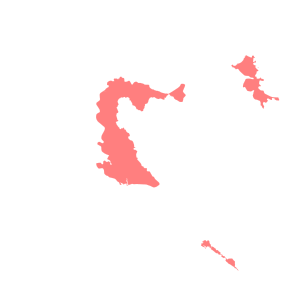
Back Batalla de Zadar Spanish Bitka za Zadar Croatian Zárai csata Hungarian Bitka za Zadar Serbo-Croatian
| Battle of Zadar | |||||||||
|---|---|---|---|---|---|---|---|---|---|
| Part of the Croatian War of Independence | |||||||||
Zadar on the map of Croatia (JNA-held area in late December 1991 highlighted in red) | |||||||||
| |||||||||
| Belligerents | |||||||||
|
|
| ||||||||
| Commanders and leaders | |||||||||
|
|
| ||||||||
| Units involved | |||||||||
|
| ||||||||
| Strength | |||||||||
|
3,000 (180th Brigade alone) |
4,500 (JNA estimate) | ||||||||
| Casualties and losses | |||||||||
| unknown | unknown | ||||||||
| 34 civilians killed in artillery bombardment of Zadar | |||||||||
The Battle of Zadar (Croatian: Bitka za Zadar) was a military engagement between the Yugoslav People's Army (Jugoslovenska Narodna Armija, or JNA), supported by the Croatian Serb Serbian Autonomous Oblast of Krajina (SAO Krajina), and the Croatian National Guard (Zbor Narodne Garde, or ZNG), supported by the Croatian Police. The battle was fought north and east of the city of Zadar, Croatia, in the second half of September and early October 1991 during the Croatian War of Independence. Although the JNA's initial orders were to lift the Croatian siege of the JNA's barracks in the city and isolate the region of Dalmatia from the rest of Croatia, the orders were amended during the battle to include capturing the Port of Zadar in the city centre. The JNA's advance was supported by the Yugoslav Air Force and Navy.
Fighting stopped on 5 October, when a cease-fire agreement was reached by the belligerents after the JNA reached the outskirts of Zadar and blocked all land routes to the city. Subsequent negotiations resulted in a partial withdrawal of the JNA, restoring road access to Zadar via the Adriatic Highway and the evacuation of JNA facilities in the city. The JNA achieved a portion of its stated objectives; while it blocked the Maslenica Bridge (the last overland route between the Croatian capital of Zagreb and Zadar), a road via Pag Island (relying on a ferry) remained open. The JNA Zadar garrison was evacuated as a result of negotiations, but the ZNG captured several relatively small JNA posts in the city. The port was never captured by the JNA, although it was blockaded by the Yugoslav Navy.
The September–October fighting caused 34 civilian deaths in Zadar from the artillery bombardment. Croatia later charged 19 JNA officers involved in the offensive with war crimes against the civilian population; they were tried, convicted in absentia and sentenced to prison.
© MMXXIII Rich X Search. We shall prevail. All rights reserved. Rich X Search

